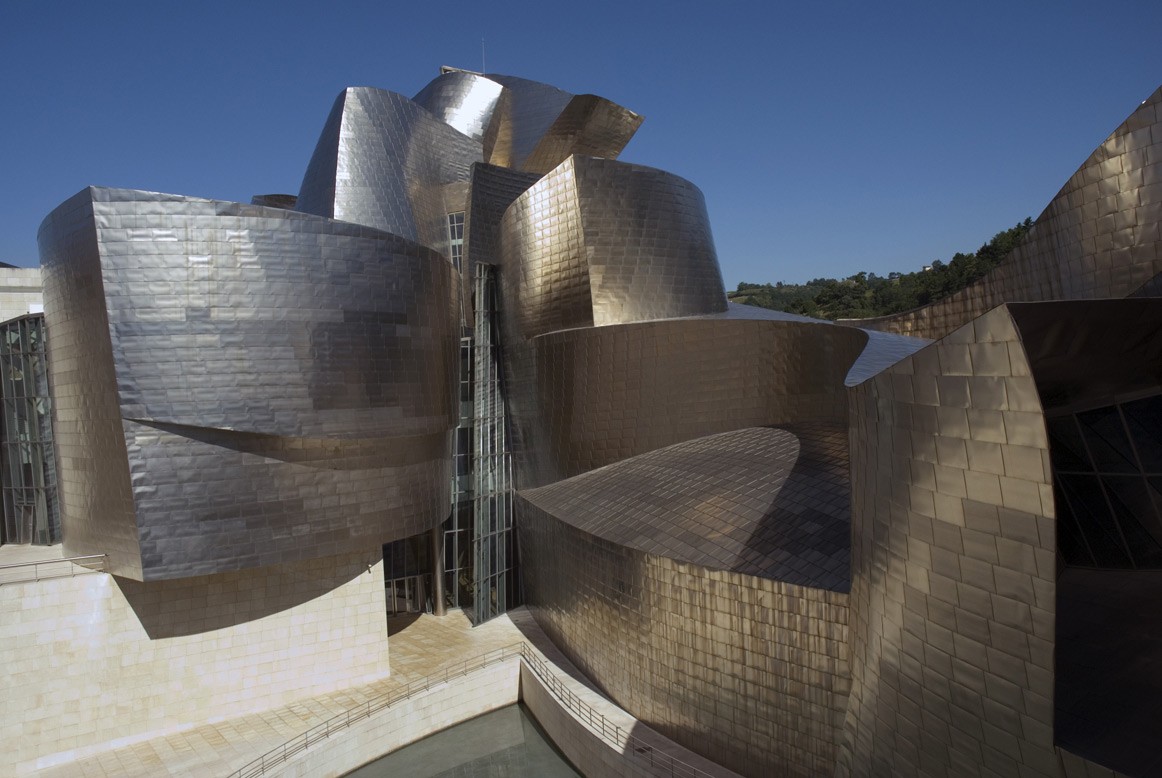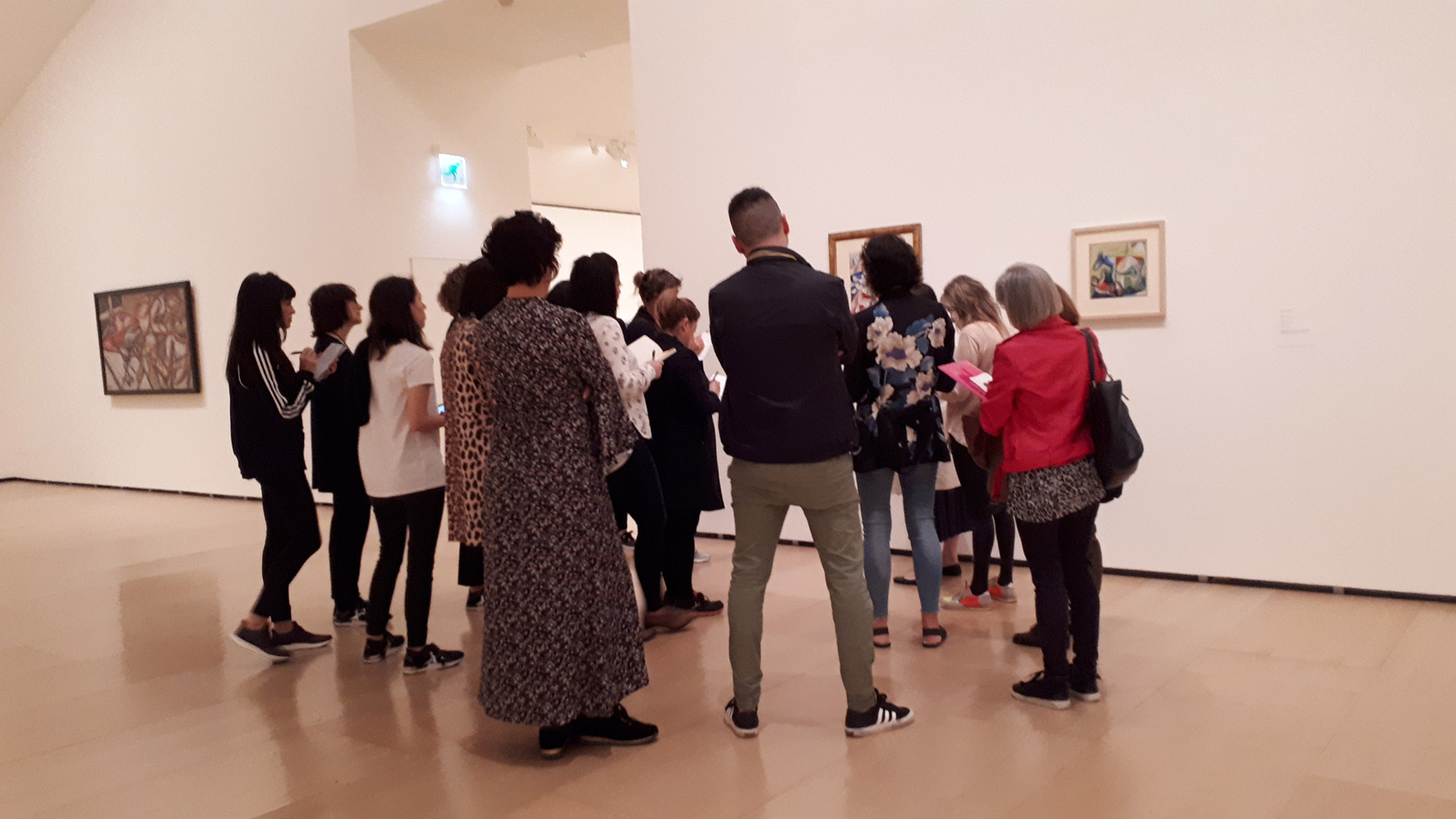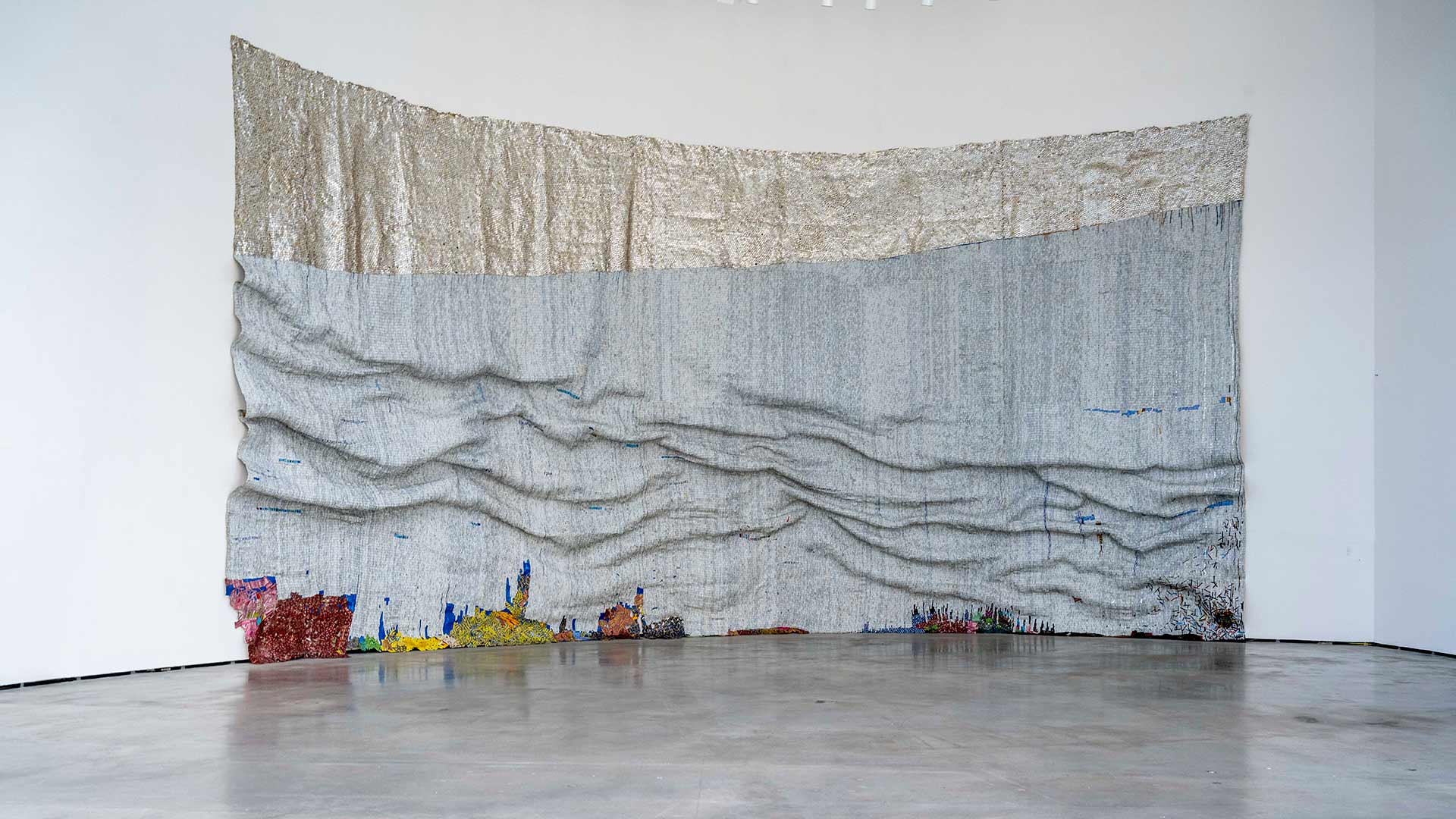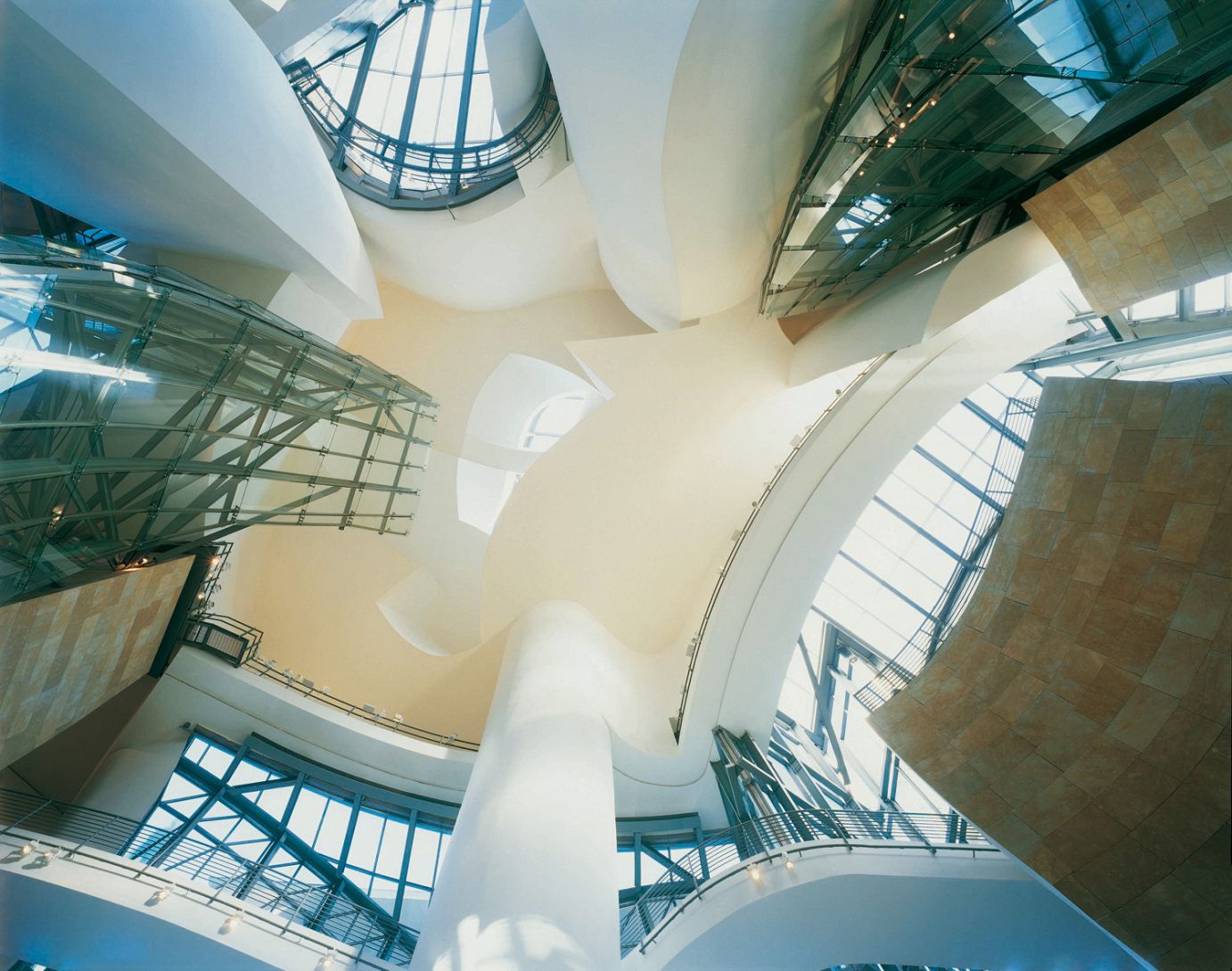
A day at the Museum
Have an unforgettable experience at the Guggenheim Museum Bilbao, visiting the exhibitions and taking a look at the building’s stuning architectural features.
Explore the educational areas in each exhibition, where you will find a variety of tools including texts and reading sections, interactive software, videos, audio files, images, illustrations, and graphic resources. They will make your experience much more rewarding!
* Scan the QR codes in the galleries to get the audio guides on your mobile phone for a most enjoyable tour.

Maria Helena Vieira da Silva
Gallery 105
(October 16–February 22)
The exhibition dedicated to Portuguese abstract painter Maria Helena Vieira da Silva (b. 1908; d. 1992) is divided into several sections that cover her work from 1930 to 1980.
Maria Helena Vieira da Silva was an outstanding member of the School of Paris thanks to her unique language, oscillating between figuration and abstraction. In her paintings she created scenes that are halfway between fiction and reality, using projecting lines, grids, checkerboards, and motifs inspired in traditional Portuguese tiles, thus transforming the painting space within the canvas. In 1938, faced with the threat of World War II, she was forced into exile in Rio de Janeiro, Brazil, where she produced paintings like Tragic Maritime Story or Shipwreck (História trágico-marítima ou Naufrage, 1944).
After the war, she returned to Paris, where she continued her work on real and imaginary structures and architectures, as in The City (La Ville, 1950–51). In her work, the artist painted labyrinthine interiors, colorful kaleidoscopes where figures merge into the ground.
In the final section of the exhibition, the vibrant hues of many of Vieira da Silva’s paintings give way to different shades of white, which reflect the Vieira Da Silva’s experiments with light—a constant throughout her career.
Maria Helena Vieira da Silva
The City (La Ville), 1950–51
Oil on canvas
97.3 x 129.4 cm
Museum of Modern Art, New York, Gift of Mrs. Gilbert W. Chapman
© María Helena Vieira da Silva, VEGAP, Bilbao 2025
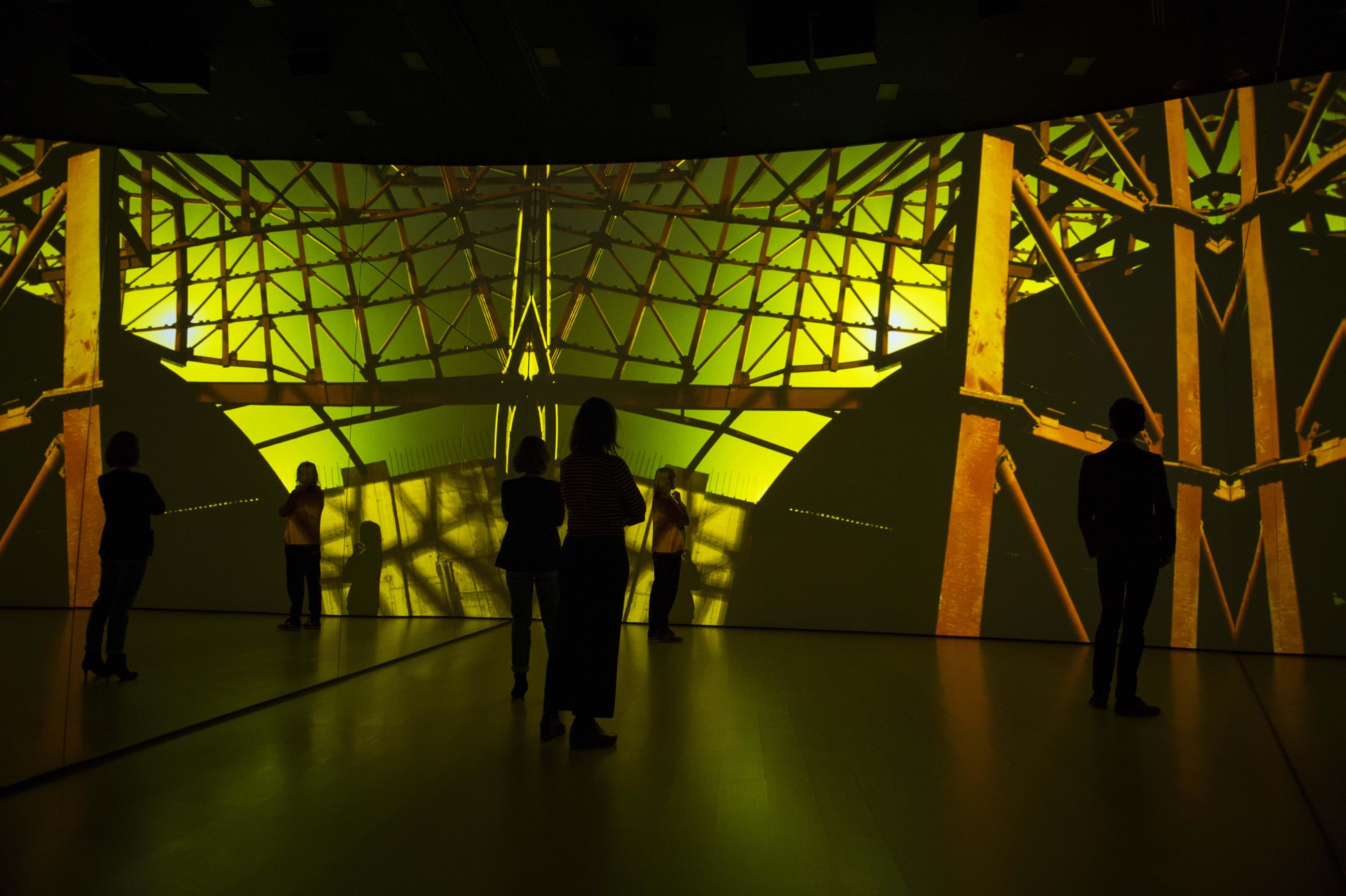
Zero
Lobby
We suggest you start your tour of the Museum at ZERO, an immersive experience with a powerful visual language and an amazing design.
Located in the lobby, ZERO welcomes all visitors with a sensory approach to the history of the Museum and its environs, to the Frank Gehry–designed building, and to the Museum Collection.
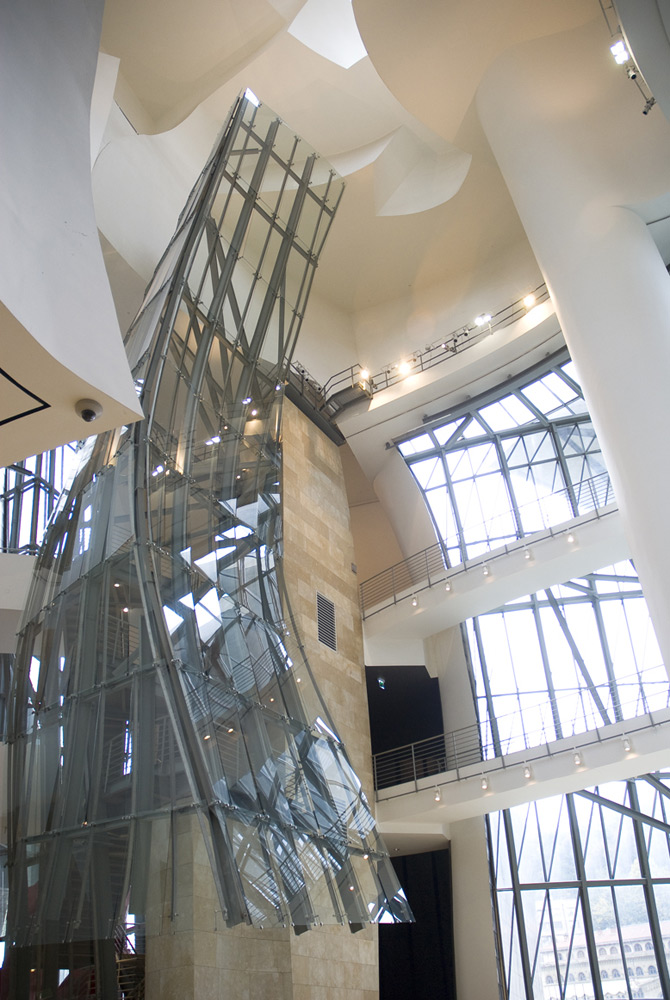
Atrium
1st floor, Atrium
The Atrium is the beating heart of the building, connecting the interior to the exterior. The walkways pumping visitors into or out of it offer new standpoints to observe the artwork on view.

The Matter of Time
1st floor, gallery 104
You can experience and activate time and space by wondering about The Matter of Time, an installation by Richard Serra (1994-2005).
Originally designed for gallery 104, this series of seven monumental sculptures posed a huge challenge in terms of both manufacturing and installation. The sculptures were impossibly heavy and yet quite fragile, being made of towering weathering steel sheets. It took state-of-the-art technology to make them.
At the far end of the gallery, there is an educational space where you can find a video showing how they were installed. Make sure not to miss it!
Richard Serra
The Matter of Time , 1994–2005
Weathering Steel
Dimensions variable
Guggenheim Bilbao Museoa
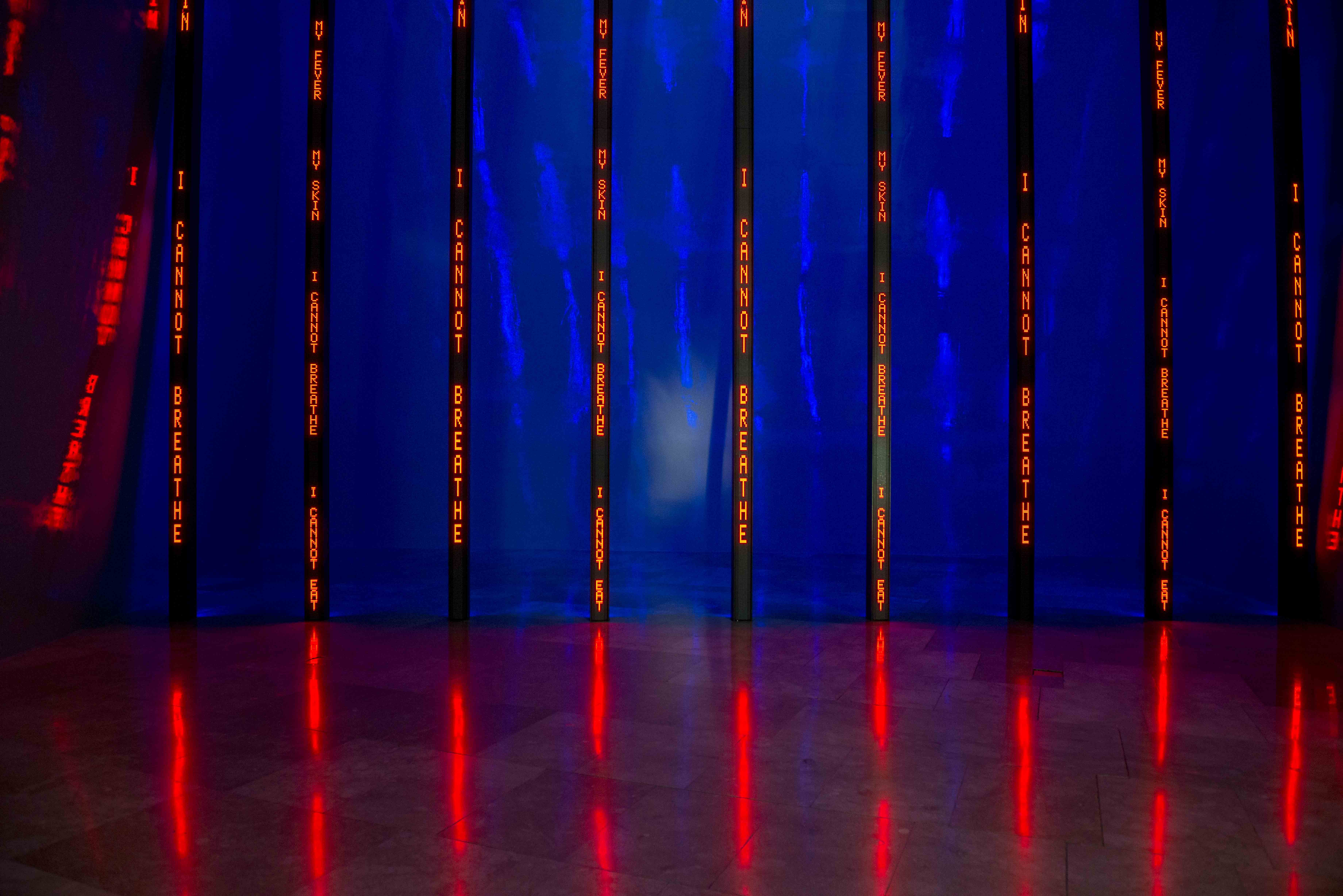
Site-specific Works (Museum interior)
1st floor, Atrium
Standing in dialogue with the interior and the exterior of the building designed by Frank Gehry, site-specific works by contemporary artists make a significant part of the Guggenheim Museum Bilbao Collection.
In gallery 101, by the Atrium, take a look at Jenny Holzer’s Installation for Bilbao (1997).
Jenny Holzer
Installation for Bilbao , 1997
Electronic LED sign
Site-specific dimensions
Guggenheim Bilbao Museoa
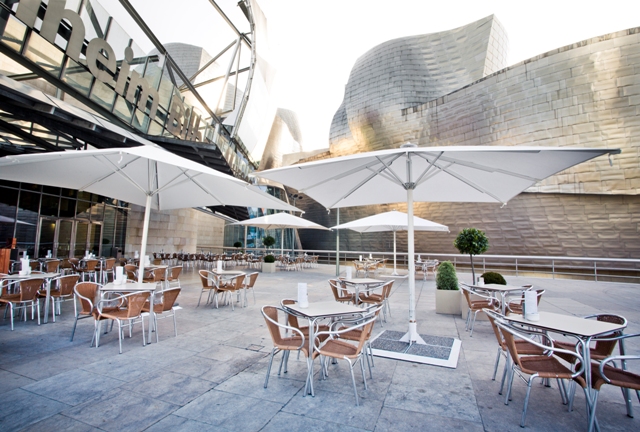
Bar Guggenheim Bilbao
Plaza
If you need a break or a snack, go to the Bar Guggenheim Bilbao, next to the Bistró, in the Museum plaza.
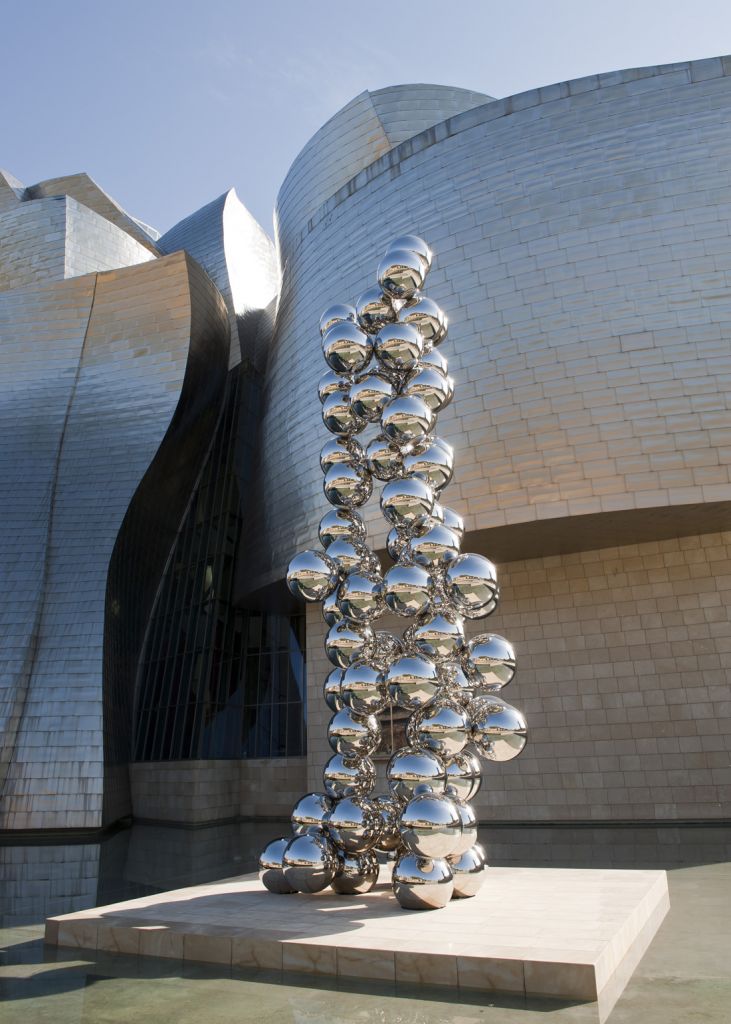
Museum Exterior
1st floor, terrace
From the riverfront terrace you can see how the Museum is seamlessly integrated into the surrounding cityscape in terms of materials (glass, titanium, limestone) and how it connects with the surrounding buildings and structures.
The pond pays tribute to the Nervión estuary and its fundamental role in the development of the city of Bilbao. It also makes the perfect setting for artwork by Anish Kapoor and Yves Klein.
Going out from the Atrium, walk into the terrace and discover the works by Eduardo Chillida and also by Louise Bourgeois. You can also take a look at the pieces by Fujiko Nakaya, Daniel Buren, and Yves Klein, also installed outside, which are operated to become active at regular intervals.
Anish Kapoor
Tall Tree & The Eye , 2009
Stainless steel and carbon steel
1297 x 442 x 440 cm
Guggenheim Bilbao Museoa

Works from the Guggenheim Museum Bilbao Collection
3rd floor
The third floor houses Works from the Guggenheim Museum Bilbao Collection, a journey through some of the leading art movements in the second half of the 20th century and the early years of the 21st, including works by renowned artists like Anselm Kiefer, El Anatsui or Mona Hatoum belonging to the Museum Collection.

Restaurants
Restaurants
The Museum affords two spaces with different culinary experiences: Nerua Guggenheim Bilbao, an haute cuisine restaurant, and the Bistró Guggenheim Bilbao, a restaurant wrapped in a more informal atmosphere.
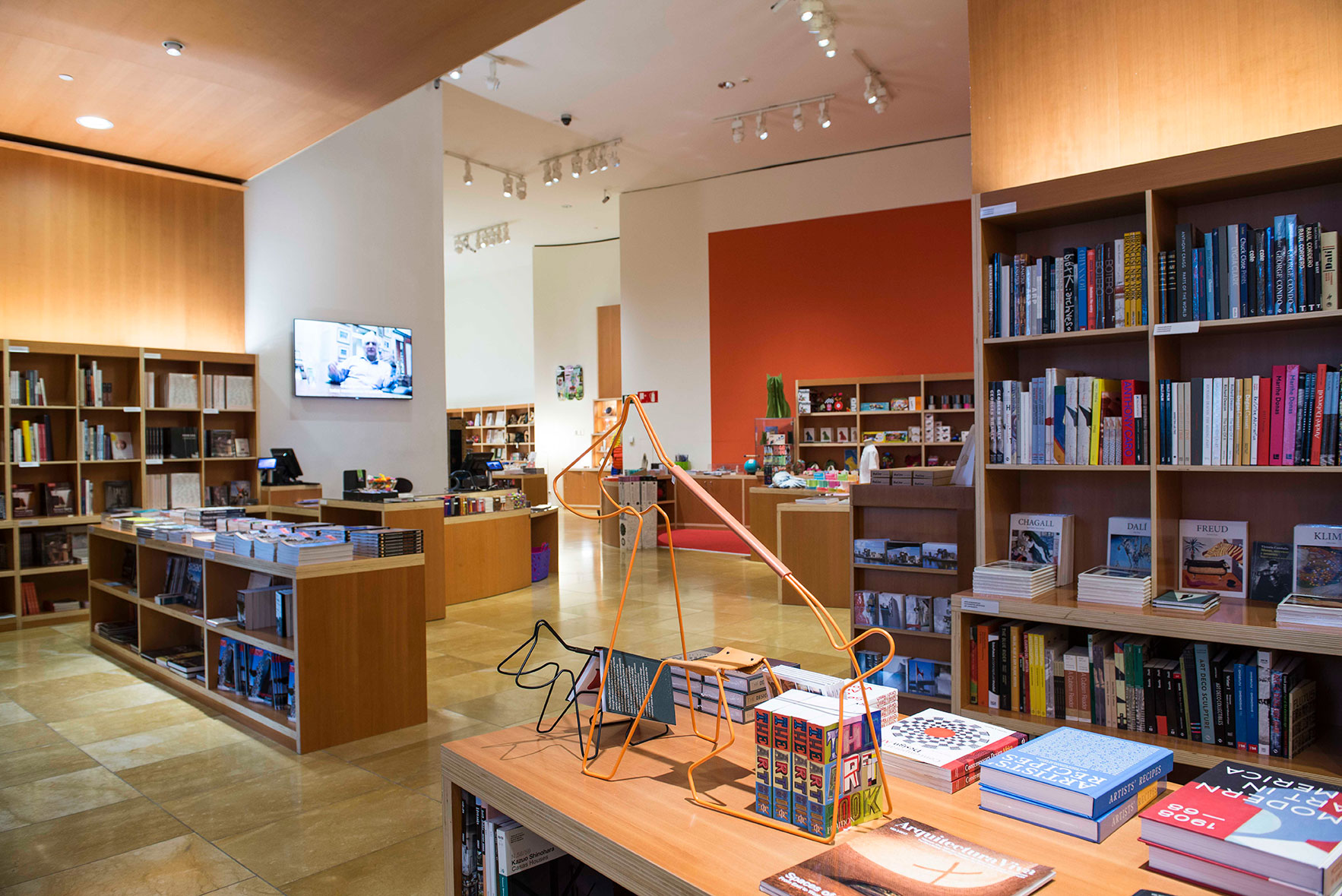
Store-Bookstore
1st floor
The Museum Store/Bookstore offers a wide range of items, including design objects, exhibition catalogues, books, and all kinds of gifts. Discounts available for Museum Members. You can also buy from home visiting our online Store.
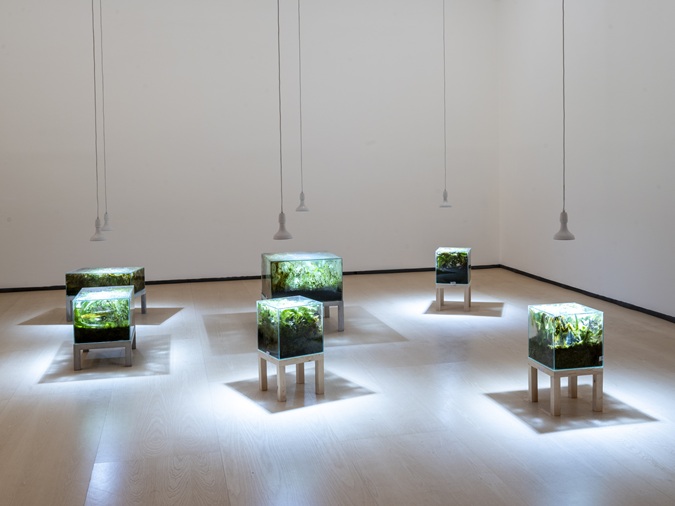
Arts of the Earth
Arts of the Earth presents works by pioneering artists in landscape intervention and the use of organic materials that explore themes of identity, gender, and ecology. Intersecting with currents such as conceptual art and Land Art, the exhibition includes installations, sculptures, textiles, performances, and paintings created in recent decades, along with ephemeral works that will sprout, grow, and transform during the course of the show.
The itinerary begins on the second floor, in gallery 205, with historical works by artists such as Meg Webster, Ana Mendieta, and Fina Miralles, among others.
The monumental installation by Delcy Morelos made of earth covers practically the entire space of gallery 206. As we enter, we are greeted by aromas of cinnamon and cloves, blended with clay to create an experience that, through the senses, invites us to connect with the intangible.
Next, in gallery 207, we find living works that re-present plant processes, such as Hans Haacke’s Grass Grows, Isa Melsheimer’s Wardian Cases, and Asad Raza’s participatory installation Root sequence (Mother Tongue), a miniature forest featuring 26 saplings.
In gallery 209, there are monumental adobe ceramics created by Gabriel Chaile, along with pieces by Oscar Santillán that emulate the soil composition on Venus, and textiles made with chaguar fibers by indigenous women from the Wichí community. The itinerary then continues in gallery 203, where the Ateneo Campesino [countryside athenaeum] displays objects related to the cultivation of land, linked to ancestral practices such as beekeeping and agriculture, both locally and globally. Finally, the works of the artists shown in gallery 202 are made from organic materials, as exemplified by María Cueto’s plant tapestries and Heidi Bucher’s architectural prints in beeswax.
Isa Melsheimer
Wardian Case, 2023
Glass, potting soil, seeds, plants
Dimensions variable (installation view at the Guggenheim Museum Bilbao)
Courtesy the artist and Galerie Jocelyn Wolff, Paris
© Isa Melsheimer, Bilbao 2025

